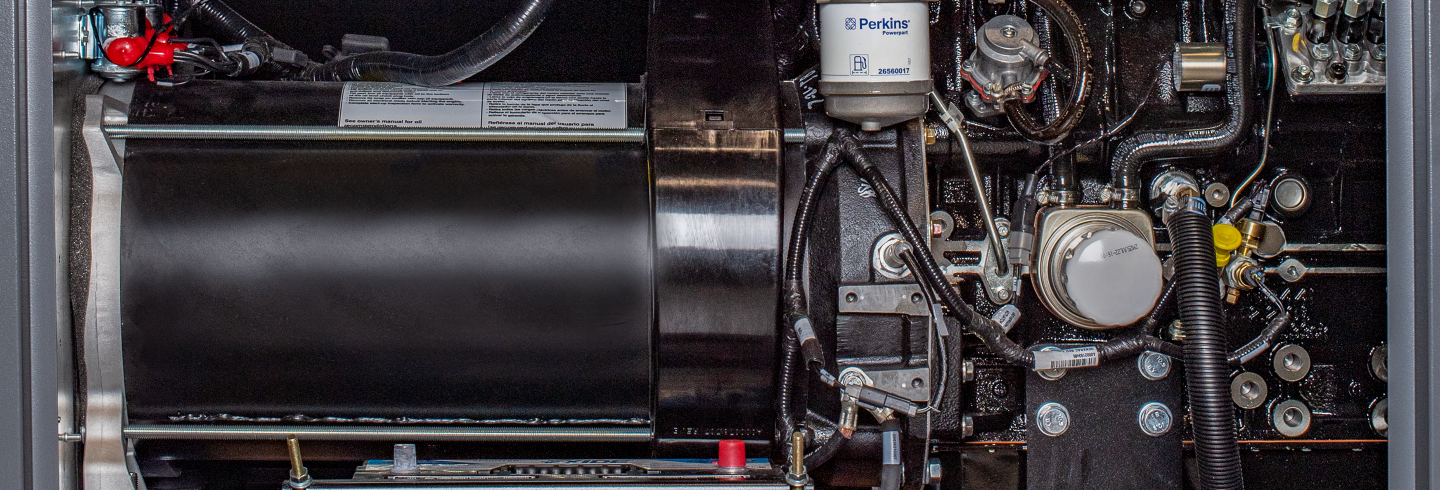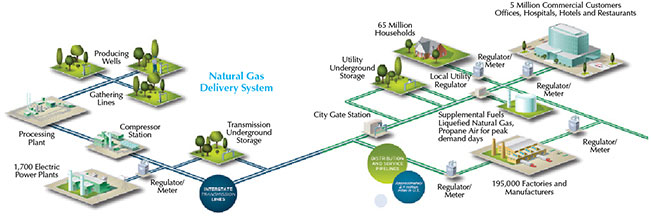
Natural Gas How Does the Underground Natural Gas Delivery System Work?
How Does the Underground Natural Gas Delivery System Work?

To most people, natural gas is known by its rotten-egg smell that signals something isn’t right in their home or as a must-have fuel for stoves, furnaces and other appliances, but where does this gas come from? How does it finally arrive at the stovetop to boil our water, fry up our pancakes, or power our natural gas generators? Many people wonder: How does natural gas work?
Our nation’s natural gas delivery system is split into three main parts: the gathering of gas from multiple small wells, the transmission of the gas by long-distance pipelines and the distribution of the gas to local customers. Within all of these parts are other systems that work together to deliver natural gas safely and reliably to customers.
The fundamental principle of the natural gas supply pipeline architecture — gathering, transmission and distribution — is gas flowing from higher to lower pressure. This process starts with wells. Wells exists throughout all of the continental United States, and the natural gas flows from the wells into gathering lines, which are similar to branches on a tree, getting larger as they approach a central collection point.
Gathering lines often include compressors or machines that help push the gas through the lines to aid in moving it to a pipeline or processing plant. Some gathering systems include processing facilities that act as a filtration system. Processors are often used to remove impurities such as water, carbon dioxide, sulfur or helium that can damage the pipeline or reduce the energy value of the gas.
From the gathering system, natural gas moves into the transmission phase of the pipeline architecture. The easiest way to visualize this phase is to picture the highway system. This stage is made up of thousands of miles of steel pipe that reliably move the natural gas from the wells to the local distribution companies (LDCs).
Approximately every 40 to 100 miles along each pipeline, automated compressor stations boost the pressure in the pipeline and replenish pressure that may be lost during the journey due to friction. The function of the transmission and compressor system is what makes the natural gas process so resilient and reliable. According to a study by MIT, even with the failure of half the compressors, the distribution network could still run unattended and without power.
Once the natural gas in a transmission pipeline reaches the LDC, it passes through a gate station. Gate stations serve three main functions: to reduce pressure in the line to the level needed for distribution, to add the compound (typically mercaptan) to the gas, and to measure or meter the flow rate of the gas in order to determine the amount received by the LDC. Mercaptan gives natural gas a distinct sulfur or rotten-egg odor for consumers to better detect the otherwise unscented gas.
After the gate station, the natural gas flows into the final distribution stage of the pipeline infrastructure. At this stage, the gas is distributed through mains to the end user via pressure regulators that reduce the gas pressure to a usable level. Regulator sensors are monitored closely to ensure that sufficient flow rate and pressure are maintained such that the gas can be used to fuel equipment and appliances.
If you are considering purchasing a natural gas generator and have any questions, Generac service and support is available at any time. We also offer support for current owners of diesel, natural gas, or bi-fuel generators.
Related Articles
